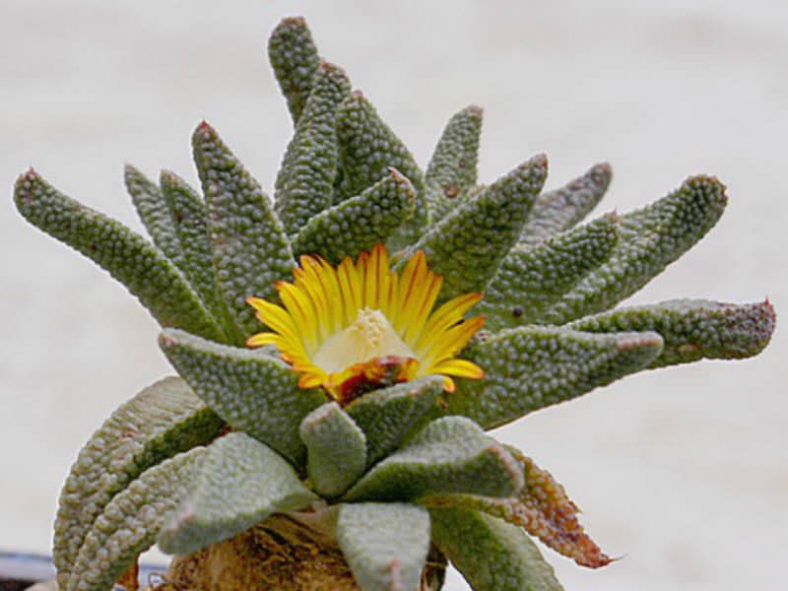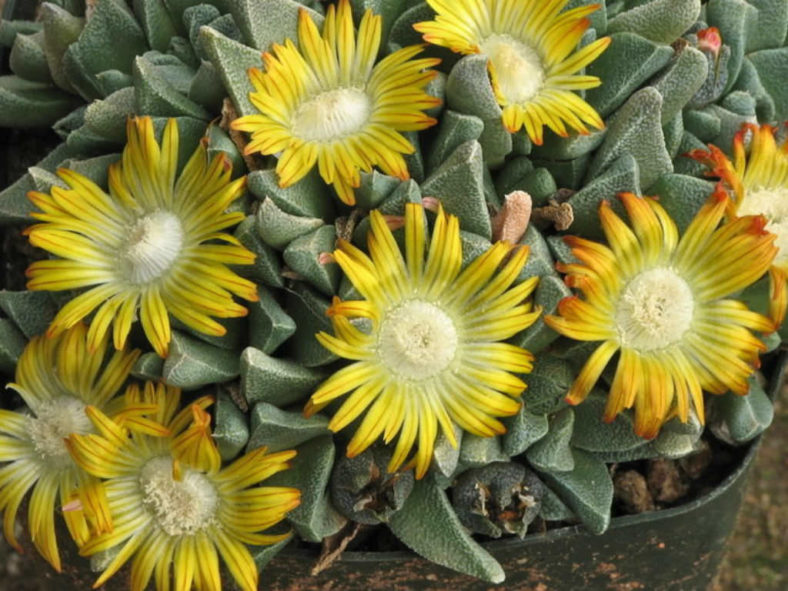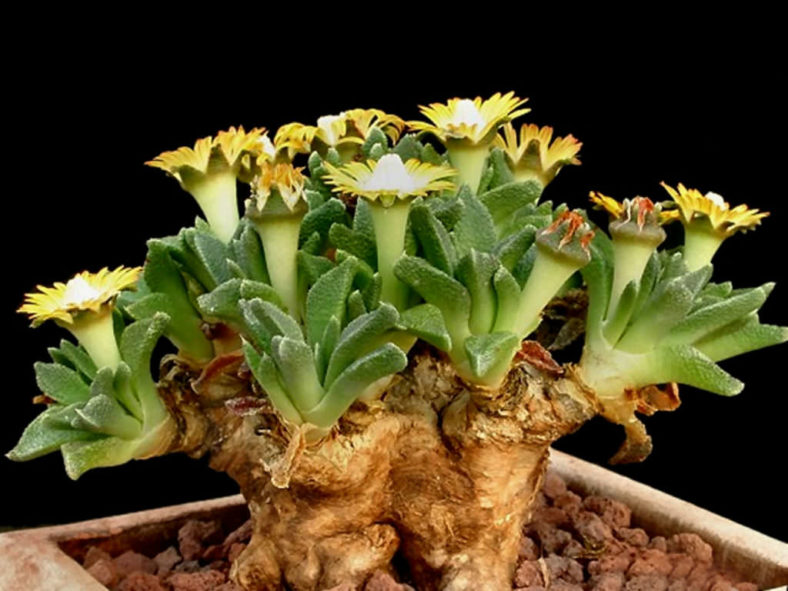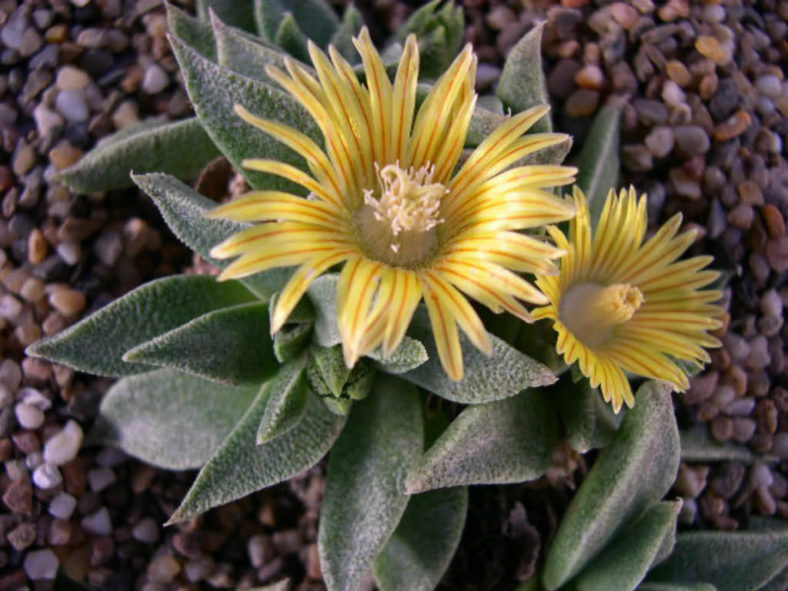Scientific Name
Nananthus vittatus (N.E. Br.) Schwantes
Synonym(s)
Mesembryanthemum vittatum, Aloinopsis vittata
Scientific Classification
Family: Aizoaceae
Subfamily: Ruschioideae
Tribe: Ruschieae
Genus: Nananthus
Etymology
The specific epithet "vittatus" (pronounced "vy-TAH-tus") means "banded" and refers to the distinct red stripe on the petals of this species.
Origin
Nananthus vittatus is native to South Africa (Mpumalanga).
Description
Nananthus vittatus is a much-branched succulent with a large caudex and thick, fleshy, olive-green to dark green leaves arranged in rosettes. It can grow up to 4 inches (10 cm) tall. The leaves are ovate to lance-shaped, measuring up to 12 inches (30 cm) in length and 0.4 inches (1 cm) in width.
The daisy-like flowers are yellow with a red stripe down the middle of each petal. They appear in winter and can reach a diameter of 1 inch (2.5 cm).

How to Grow and Care for Nananthus vittatus
Hardiness: USDA hardiness zone 9b to 11b: from 25°F (-3.9°C) to 45°F (7.2°C).
The members of the genus Nananthus are easy and rewarding plants. In the wild, they are summer growers but often behave as winter growers in cultivation. Coming from a more continental part of South Africa, these cacti will tolerate intense heat and some frost. They should be lightly shaded in summer. Water only when the plant starts shriveling. They need full sun or light shade in the other seasons. They generally bloom in the fall.
Most species develop extensive root systems and require a large pot with a well-draining soil mix to prevent root rot. These plants are sometimes planted to reveal their root systems.
Nananthus will take a small amount of frost for a short time. It is reportedly hardy to at least 10°F (-12°C). Keep cool in summer.
Nananthus is propagated by cuttings and seeds.
See more at How to Grow and Care for Nananthus.
Links
- Back to genus Nananthus
- Succupedia: Browse succulents by Scientific Name, Common Name, Genus, Family, USDA Hardiness Zone, Origin, or cacti by Genus
Photo Gallery
Click on a photo to see a larger version.


